Indoor jasmine: varieties, selection, cultivation, reproduction
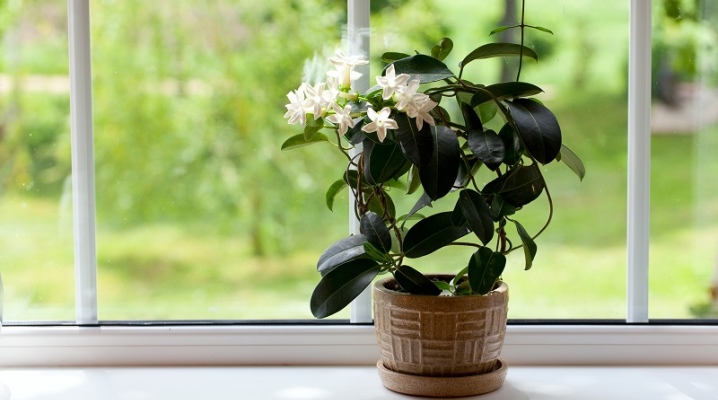
The ever-blooming indoor jasmine is the pride of any grower. It has an amazing sweetish aroma, attractive appearance. Adhering to the basic rules of caring for it, indoor jasmine will feel great. If you want to decorate your home with homemade jasmine, you need to familiarize yourself with different plant varieties, the intricacies of caring for it, planting and transplanting rules, study the technique of its reproduction and how to deal with various diseases and pests.
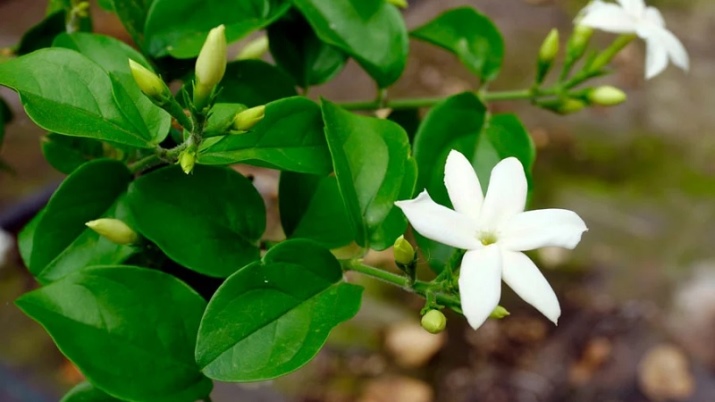
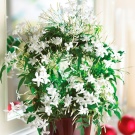
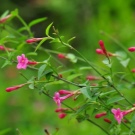
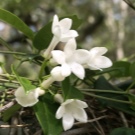
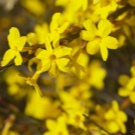
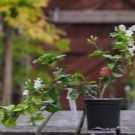
Description
Indoor jasmine stands out for its amazing flowering among other plants that are grown at home. The flower belongs to the Olive family, as you can guess from its appearance. Jasminum is represented by about 300 species. It grows in the Mediterranean and is also found in Australia and South America.
The jasmine bush can be different - curly or erect, some of its varieties even reach a height of 4.5 m.Smooth shoots are densely covered with dark green leaves, which can be simple, pinnate or trifoliate. Leaves are usually 3-5 cm long. When the flowering period comes, then buds form on each branch of the jasmine bush, over time they become large-sized and regular-shaped flowers. The corolla can be reddish, yellow, or white. In the inner part there is a kind of tube that includes two stamens located on short strings. After flowering, the fruit is formed in the form of a berry.
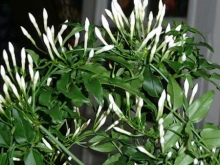
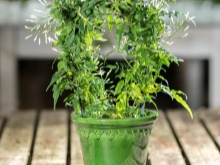

Types and varieties
Today, several varieties of jasmine are suitable for indoor cultivation. They have some differences in flowering, but have much in common in the structure of the bush, the type of shoots and leaves. Let's take a closer look at the popular varieties of indoor jasmine.
Multi-flowered
This variety is also called Jasminum polyanthum or polyanthum. Its distinctive feature is strong branching. It is presented as an attractive shrub. The climbing bush reaches a height of 1.5 to 2 meters. Oval-shaped leaves with a built-up edge are arranged alternately. They attract attention with a dark green color and a beautiful wavy edge.
Tubular flowers form apical inflorescences that include 5 lobes. The highlight of this species is the change from bright pink buds to white flowers when blooming. It is worth noting the amazing aroma of the plant, which is quite strong. You can easily feel it even when you are far from the flower. This jasmine blooms for a long time, from late winter to late summer.
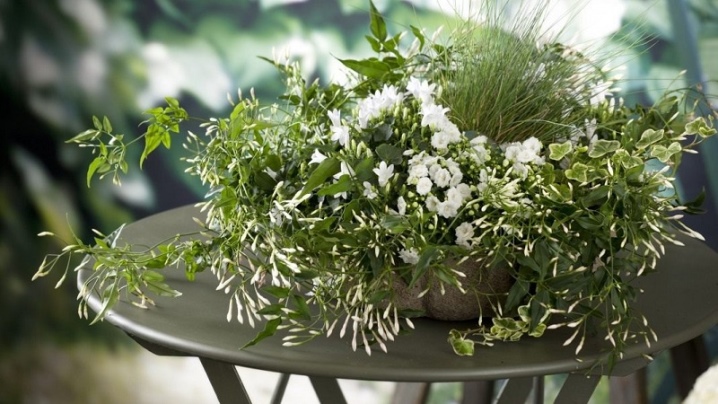
The finest jasmine or Jasminum gracillimum today belongs to this plant species, although it was previously an independent species. By their appearance, you can find differences between them. It is presented in the form of a small liana, which has thin drooping shoots. Light green leaves of a simple shape are no more than 3.5 cm long. The base of the leaf is cordate.
The main difference from multi-flowered jasmines is the flowers. In the finest jasmine, they form umbrellas; the corolla consists of 8 pointed lanceolate petals. The flowers are 2.5 cm in diameter and usually delight the eye from January to March.
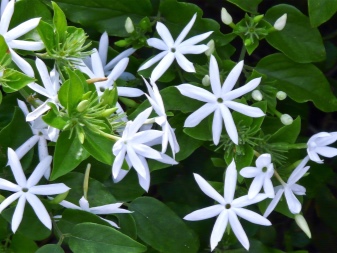
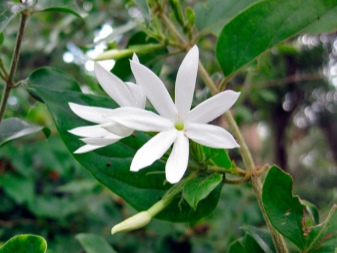
Large-flowered
Its second name is Jasminum grandiflorum.It is presented in the form of a vine, reaching 10 meters, with completely naked shoots. Dark leaves attract attention with an unusual elliptical shape. The flowers of the plant are located at the tops of the shoots. They form umbrellas, of which there can be up to 10 pieces per branch.
This variety usually blooms from June to October. Snow-white flowers surprise with an exquisite aroma.

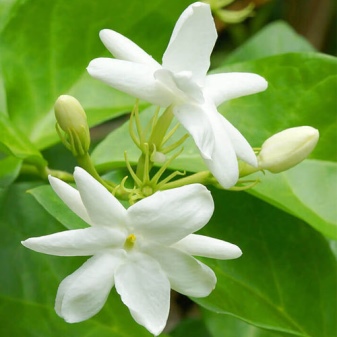
Bissa
This species is often referred to as Jasminum beesianum. It looks like a shrub evergreen liana. Shoots are up to 5 meters long. Lanceolate leaves are opposite, no more than 5 cm in length. It is worth noting the inconspicuous edge of the leaves and the dark green color, which is much brighter than that of other varieties. The pink flowers have an amazing scent. They are formed at the tops of the shoots, while gathering up to three pieces in panicles. On average, the diameter of a flower is 2 cm. Bissa cannot boast of long flowering, since usually its flowers can be admired only in May.
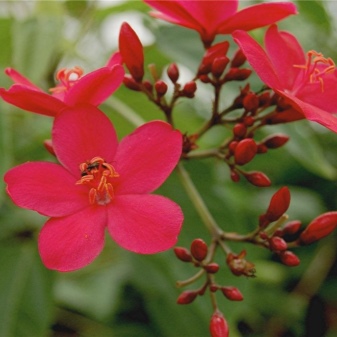

Holoflower
This variety is also known as Jasminum nudiflorum. Its difference lies in a small branching and a small number of leaves. The bright green leaves are quite small. Usually, their number decreases significantly with the arrival of winter, as they fall off. Amazing flowers are yellow in color. They are quite large, as they are usually more than 3 centimeters in diameter. Flowers bloom one at a time in the axils of the leaves. Bloom lasts from January to April. This variety is often called winter.
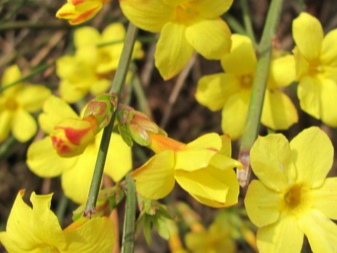
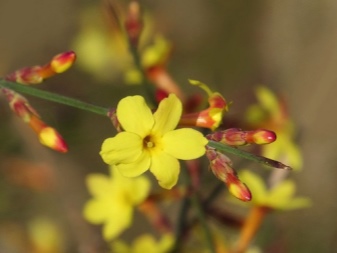
Sambac
Sambac is a very unpretentious ornamental plant that is quite easy to grow. It is better to plant it in those regions where winters are warm. Usually, in nature, jasmine shoots can reach 6 meters. They are ligneous and drooping, which distinguishes Sambac from other varieties of jasmine. Ovate leaves up to 10 cm long are opposite, and often form whorls of three leaves. Fragrant snow-white flowers form inflorescences of 3-5 flowers. They can be either double or semi-double. This species blooms for a long time, namely from early spring to mid-autumn. In appearance, Sambaca flowers resemble semi-double roses or camellias, but not with other varieties of jasmine.
The "Grand Duke" variety of this type deserves special attention. This perennial needs careful care, only then it will be possible to get large double flowers. The variety "Orleans Maid" is very popular. It is a fast growing shrub that was bred by Indian breeders. A flower can delight the eyes of others for only 24 hours, after it falls, but a new bud blooms in its place.

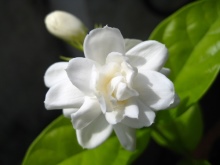
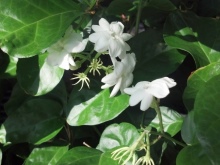
Madagascar
The second name is stephanotis. It belongs to the Lastovnevye family. It is represented by a wide variety of species, but all of them are curly and evergreen. The Madagascar jasmine species has more than 10 species that are found on the islands of the Malay Archipelago, Madagascar, China and Japan. For home cultivation, the stefanotis species is often chosen profusely. It has dark green oval leaves. White star flowers have an amazing aroma.
Quite often this flower is used to create a bridal bouquet.

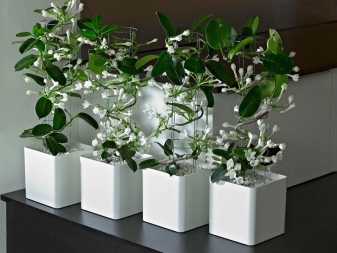
How to choose?
The choice of indoor jasmine depends on its appearance and care features. Today, there are several varieties of this plant on sale. In many countries, jasmine is grown in large quantities. It is often used to create perfumes. It is ideal for creating delicious teas that are especially appreciated in India. You can prepare jasmine yourself for this drink - you need to collect the inflorescences from the indoor flower, dry them and then add to the tea.
Quite often, jasmine in a pot is placed in bedrooms if a person suffers from depression, colds and insomnia. Indoor jasmine has many beneficial properties that do not depend on the particular variety. Each of them helps to get rid of certain problems.
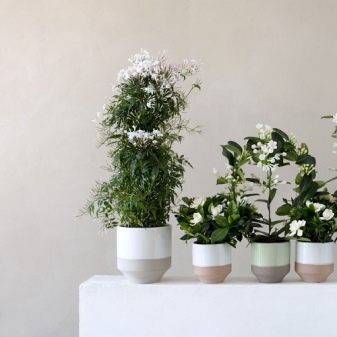

Landing
Young plants should be transplanted annually, but already adults can be transplanted less often - once every 3 years is enough. Initially, you will need to prepare the soil. To do this, take sand, deciduous soil and clay-deciduous soil mixture in a ratio of 1: 1. If you need to transplant the crop into a larger pot, then the composition of the soil will be slightly different - you should take 2 times more clay-deciduous soil mixture.
It is better to change the pot when the flower is already starting to fade. The root collar should be at ground level during transplanting so the plant will feel good. After planting or transplanting, do not expose the potted plant to direct UV rays. It is necessary to provide the culture with regular watering, as well as spraying with soft water.
For vines, a support is often used, while the stem of the plant is wrapped around the structure and tied with a string.
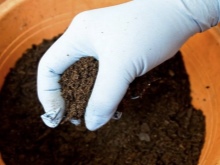


Follow-up care
Jasmine can be called quite demanding, because if you do not give 100 percent when caring for it, the plant will quickly dry out and die. It is necessary to carefully care for the plant in order to obtain an amazing aroma, attractive flowers and leaves.
Lighting
Jasmine is a light-loving plant, but it should be understood that the culture will die under the influence of direct sunlight. During the dormant period, the culture does not need additional light, but it will take a lot of sunlight to awaken the plant after winter.
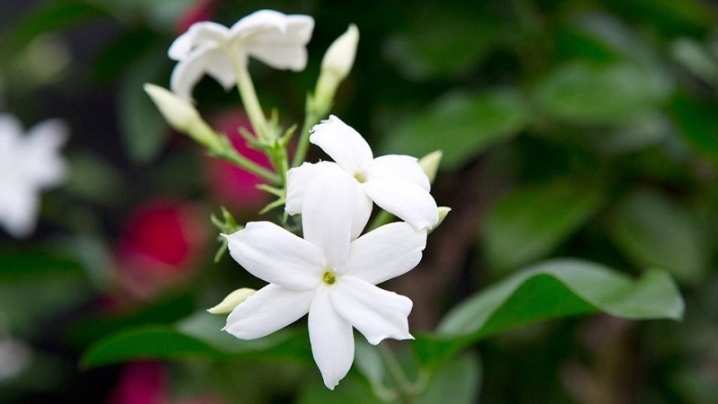
Watering
When watering, it is worth considering the stage and growth rate of the plant. It requires abundant watering both in early spring and in autumn. Subsequent watering can only be done when the topsoil is dry. In autumn and winter, their number should decrease significantly. Excessive waterlogging of the soil should be avoided. To achieve abundant flowering, lower moisture should be created by reducing the number of waterings approximately 1 month before the beginning of the flowering period.
The water should be settled, soft and warm. For jasmine, boiled cooled water or rainwater is suitable. To reduce the amount of salts in the soil, you need to apply acidified water once a month. To prepare it, add a little citric acid to the liquid. Otherwise, jasmine will develop rather slowly, and its flowering will be poor.
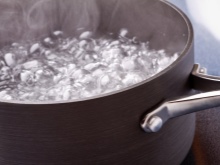
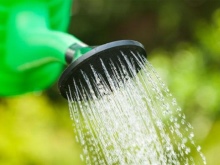

For jasmine, increased air humidity is necessary, since when dry, the plant stops blooming, and is also vulnerable to the effects of various diseases and pests. There are several methods for increasing humidity. Spraying can be used - this method is ideal for the summer. With its help, the crown of the plant will always be beautiful and green. When the jasmine begins to bloom, then the spraying should not be abandoned, but you should try not to fall on the flowers.
An excellent choice is the classic methods of humidifying the atmosphere, for example, a tray with wet pebbles or moss, which are placed under a jasmine pot.

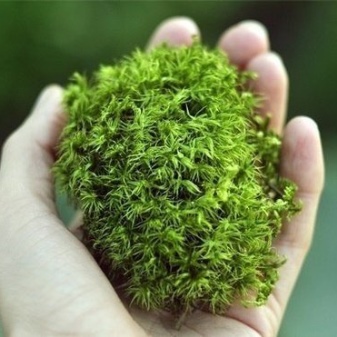
Top dressing
During the growing season and flowering, the plant requires feeding. The ideal solution is a complex fertilizer designed specifically for flowering houseplants. During active growth, jasmine should be fed once every 7 days. When it stops blooming, then fertilizing should also be stopped. It is better to use liquid fertilizing, because the plant reacts poorly to substances of long-term exposure.
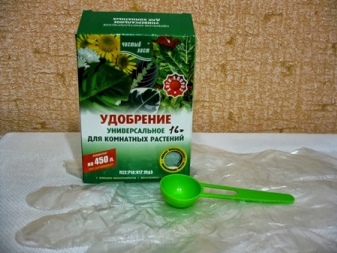
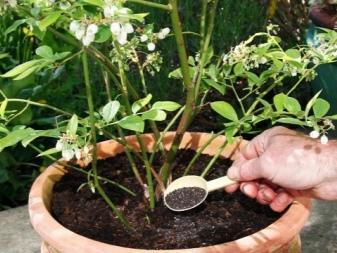
Pruning
Jasmine tolerates pruning well. At the same time, you should not think that you can only direct the shoots by tying them to supports.An evergreen liana looks beautiful even after a shaping haircut. The more often this haircut is carried out, the better the plant will bloom. It is advisable to prune in the spring, shortening almost all shoots by 1/2 or 1/3 of their length. After this procedure, the plant forms a large number of lateral branches, and buds are already formed on them. Elongated, damaged or dry shoots, as well as branches with small deformed leaves should be cut off.
If the plant is still young, then its shoots do not exceed 50-60 cm, then it is too early to talk about pruning. It is necessary to use only pinching the tops, which will increase tillering.
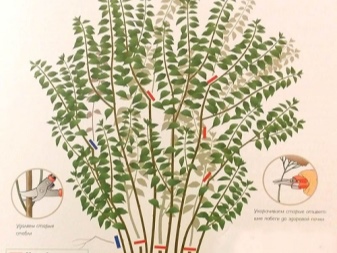
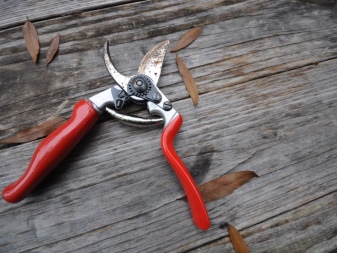
Preparing for winter
Indoor jasmine does not require special steps to prepare for winter, while the garden version needs not only pruning, but also quality protection from the cold, especially young plants. If the plant looks great, the autumn pruning was done correctly and on time, then the preparation of the home culture for the winter period is considered complete.

Disease and pest control
Indoor jasmine can be called a capricious plant, because it quite often suffers from various diseases and suffers from pests, if you do not adhere to strict rules for caring for it. Among the pests, it is worth highlighting aphids, leaf weevils and spider mites.
Pest control should be started as early as possible, then the chances of getting rid of them are much higher. To begin with, you should carefully examine the plant for damaged shoots, then carefully cut them off, and then spray the culture with one of the means to get rid of pests. To begin with, you should use biological methods to combat them. A soapy solution is an excellent choice, but if it doesn't work, then insecticides can be used.
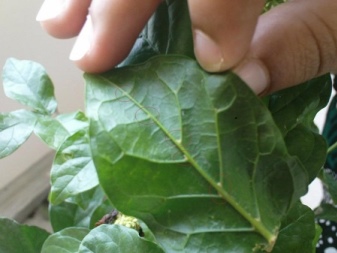
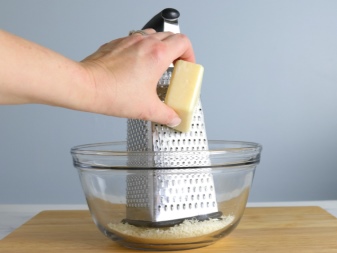
Let's consider the most common problems when growing homemade jasmine and their causes:
- the plant throws off the leaves, if there is a drying out or waterlogging of the soil, there is little air humidity in the room or a small amount of light;
- the tips of branches and leaves begin to dry out if the soil dries out or the air humidity is low;
- improperly selected water, like soil with a high alkali content, leads first to yellowing, and then to drying out of the foliage.
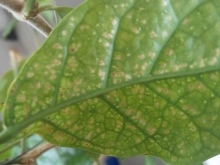
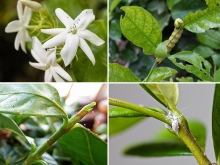
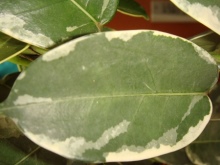
Breeding
Indoor jasmine can be propagated in two ways.
Cuttings
Cuttings should be harvested in spring or summer, but do not use flowering shoots for this. Strong, lignified branches should be preferred. In the spring, the tops should be cut off, while they should have at least 3 internodes. In the summer, it is worth taking green young shoots. It is necessary to prepare the soil from sand, peat and leafy soil. When planting, the shoots must be deepened into the soil mixture by 2 cm, while the cut must be oblique so that they take root faster. This process will accelerate the treatment of the shoots with a growth stimulant. In order for reproduction from cuttings to be successful, the temperature in the room should be maintained at about +20 degrees.
In a month, an independent plant will grow from the branch. At this time, jasmine should be transplanted. The container should have a diameter of 5 cm, but no more. When the culture has a strong root system, you can transplant the plant into a pot with a diameter of 9-11 cm.
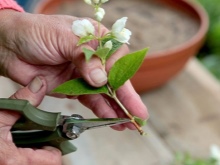
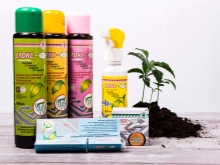
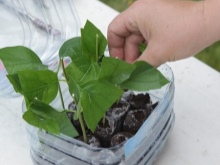
Layers
To propagate jasmine by this method, wrap the shoot in the internode with a cloth with a damp substrate or moss, but before that, make a vertical cut on the branch. Within a month, roots will appear at the site of the cut. It is important in this case to constantly maintain an increased substrate.
Indoor jasmine from seeds is not grown at home, because these are mostly hybrid varieties that cannot be propagated by the seed method.
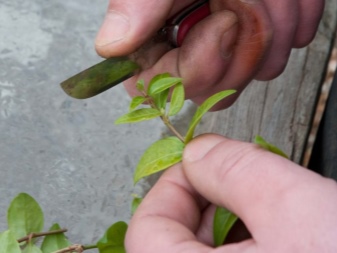
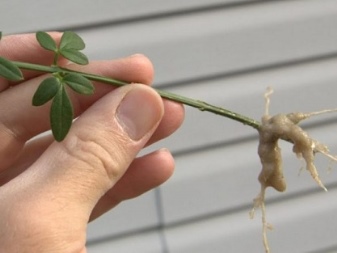
For information on how to properly care for indoor jasmine, see the next video.
































































The comment was sent successfully.